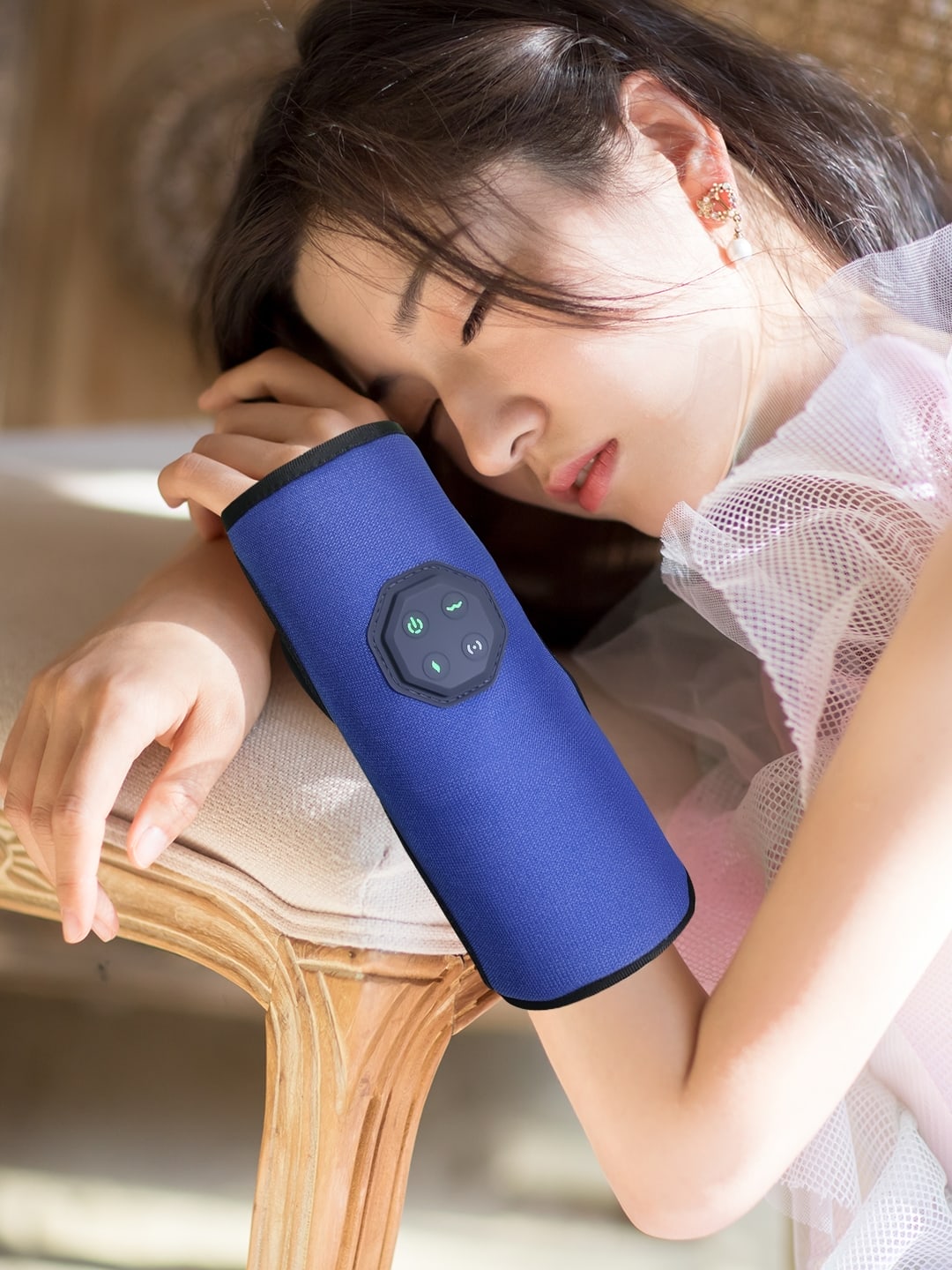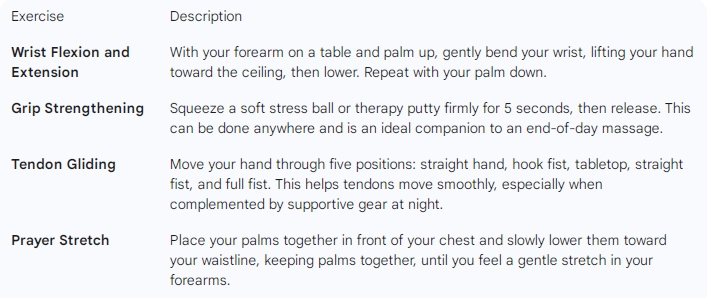Do hand held massagers help RSI for a Canadian fitness buff?
- By Grace
- Updated on
If you're a fitness enthusiast in Canada, you understand the language of strain. It’s the satisfying ache after a new deadlift PR or the burn from that final set of bicep curls. But what about that other, more nagging pain? The persistent throb in your wrist after a day of coding, the sharp twinge in your forearm from gripping a barbell, or the numbness that creeps in during a long gaming session. This isn't the "good" pain of muscle growth; this is your body sending an SOS. It's often Repetitive Strain Injury (RSI), and it's a sign that your daily routine needs a serious tune-up with effective tools.
For many active Canadians, from the tech hubs of Toronto to the outdoor adventurers in Vancouver, RSI can feel like a frustrating setback. The good news is that managing it doesn't mean giving up what you love. It means getting smarter about recovery. A truly effective approach combines three powerful pillars: targeted relief with smart tools like hand held massagers, building resilience through specific exercises, and embracing the non-negotiable power of rest, often supported by items like an elbow sleeve for tendonitis or carpal tunnel braces. Let's break down how to create a game plan where reliable massaging devices play a key supportive role.
What Exactly Is This Nagging Pain? Understanding RSI
Before we can fight the enemy, we need to know what it is. Repetitive Strain Injury (RSI) isn't one single condition. Think of it as an umbrella term for a range of painful issues in your muscles, nerves, and tendons caused by, you guessed it, repetitive movement and overuse. When you perform the same action over and over—whether it's typing, using a mouse, swinging a tennis racket, or gripping weights—you're putting targeted stress on specific tissues. Over time, this can lead to inflammation, micro-tears, and pain that requires a multi-faceted approach to manage.
Imagine a rope being rubbed against a rough edge continuously. At first, it's fine. But eventually, the fibers begin to fray. That's what's happening inside your wrists, hands, and elbows. Common conditions that fall under the RSI umbrella include tendonitis (inflammation of a tendon) and carpal tunnel syndrome (compression of a nerve in the wrist), for which some people find relief with an elbow sleeve for tendonitis or carpal tunnel braces. The key takeaway is that RSI is a signal that the load you're placing on your body is exceeding its capacity to recover. It's not a sign of weakness; it's a call for a smarter strategy, one that often includes using a hand held massagers for relief.

The Role of Targeted Relief: How hand held massagers Work
When you're in pain, your first instinct is to find relief, and this is where modern recovery tools can be a game-changer. High-quality massaging devices are becoming a staple in recovery protocols, recommended by physiotherapists across Canada for a reason. These devices go beyond a simple, feel-good vibration. They employ a multi-faceted approach to actively promote healing right where you need it most. Many advanced hand held massagers use features like rhythmic air compression to systematically squeeze and release the hand, mimicking a therapeutic massage to boost circulation and flush out inflammatory byproducts.
The addition of gentle heat further enhances this effect by encouraging vasodilation—the widening of your blood vessels. This increased blood flow delivers more oxygen and nutrients to the damaged tissues, accelerating the repair process. Meanwhile, targeted vibration can help relax tight muscles and soothe irritated nerves. This isn't just about masking pain; it's about creating an optimal environment for your body to heal itself. Using a quality device can be a really, really important first step in breaking the cycle of pain and inflammation. This targeted relief allows you to then focus on building long-term strength and resilience.

Strengthening: A Long-Term Fix Beyond a hand held massagers
While a good massaging tool provides crucial relief, strengthening exercises are key to preventing future breakdowns and building resilience against stress, especially for those who rely on braces for carpal tunnel. This proactive approach helps to support joints and tendons, reducing the need for reactive pain management. Integrating these movements into your routine takes just a few minutes a day and can be paired with a massager to reduce soreness. Supportive gear, such as braces for carpal tunnel or an elbow sleeve for tendonitis, can also be used during exercises or flare-ups to maintain stability.

The Unskippable Cooldown: Why Rest is Non-Negotiable
And let's be real, for many driven fitness enthusiasts, this is the hardest part. The word "rest" can feel like a four-letter word synonymous with falling behind. But in the context of RSI, rest is not passive laziness; it's an active and strategic component of your recovery. It’s the essential time your body needs for those micro-tears to heal and for inflammation to subside. Ignoring your body's signals for a break is like continuing to run on a sprained ankle—it only makes the underlying problem worse and prolongs your recovery time. Even the best massaging tools can't outwork a lack of rest.
So, what does smart rest look like? It means taking short, frequent breaks from the repetitive activity. If you're at a desk, use the Pomodoro Technique. If you're at the gym, be mindful of your grip. Sometimes, rest needs to be enforced. This is where tools like an elbow sleeve for tendonitis for tennis elbow, or dedicated braces for carpal tunnel for wrist stability, are invaluable. Wearing one at night prevents you from bending your wrist into stressful positions while you sleep, creating an uninterrupted healing environment. These supports, combined with a relaxing session with your hand held massagers before bed, create a powerful healing combination.
Your Path to Pain-Free Performance
Managing RSI in Canada is not about a single magic bullet. It's about a holistic system of self-care. It’s the synergy between immediate relief from a quality hand held massagers, the resilience you build with strengthening, and the healing environment you create with rest and supports like an elbow sleeve for tendonitis and carpal tunnel braces. By integrating these three pillars, you're not just treating symptoms; you're addressing the root cause. A great massaging tool is a key player on your team, helping you pursue the activities you love, pain-free. Take control of your recovery, listen to your body, and build a routine that supports you for the long haul.
Frequently Asked Questions
Are hand massagers effective for carpal tunnel syndrome?
Yes, many people find them effective for relieving symptoms. A hand massager that uses a combination of compression, heat, and vibration can help increase blood flow, reduce muscle tension, and alleviate pressure on the median nerve. While not a cure, a good hand held massagers device is an excellent tool for managing daily symptoms. For a diagnosed condition, they should be used as part of a comprehensive plan that must include supports like braces for carpal tunnel and specific exercises recommended by a professional.
How long should I use a hand massager in one session?
It's best to start with shorter sessions and listen to your body. Most manufacturers of hand held massagers recommend a session length of 10 to 15 minutes. Many devices even have an automatic shut-off timer for this duration. Using it for too long, especially on a high intensity, could potentially lead to soreness. A consistent 15-minute daily session is generally more beneficial than an infrequent, marathon session with your device.
What features should I look for in a hand massager?
When searching for the best hand held massagers, look for a combination of features that address different aspects of pain relief. Key things to consider are:
- Air Compression: This is crucial. Look for multiple airbags that provide rhythmic pressure to different parts of your hand and wrist.
- Heat Function: Gentle, therapeutic heat is excellent for soothing stiff joints and improving circulation.
- Vibration: A vibration feature can help to further relax muscles and soothe nerve pain.
- Adjustable Intensity: Your pain levels will vary. The ability to control the pressure and intensity is essential for comfort and effectiveness.
- Ergonomic and Portable Design: It should be easy to use and preferably cordless so you can use it anywhere.




